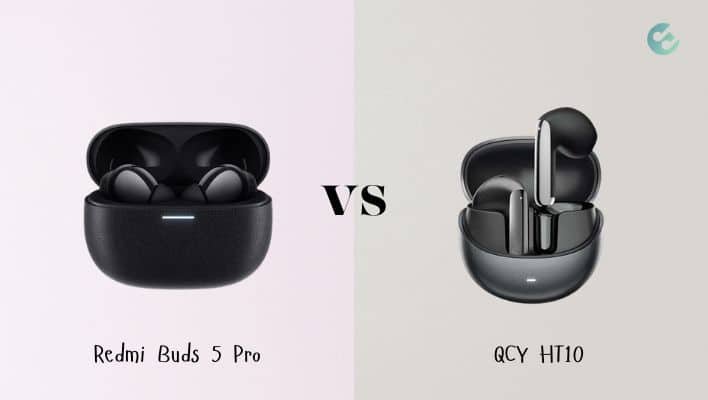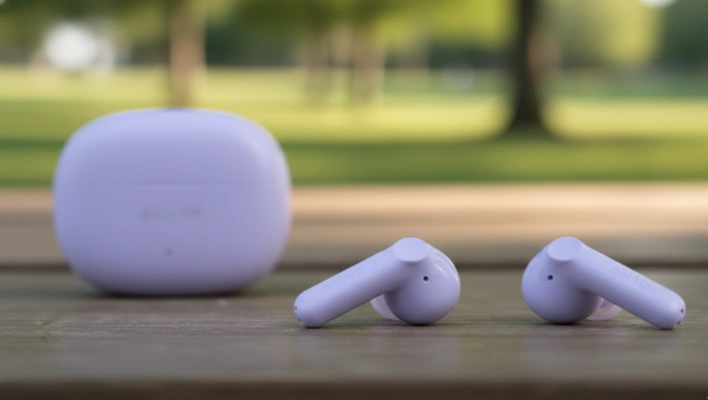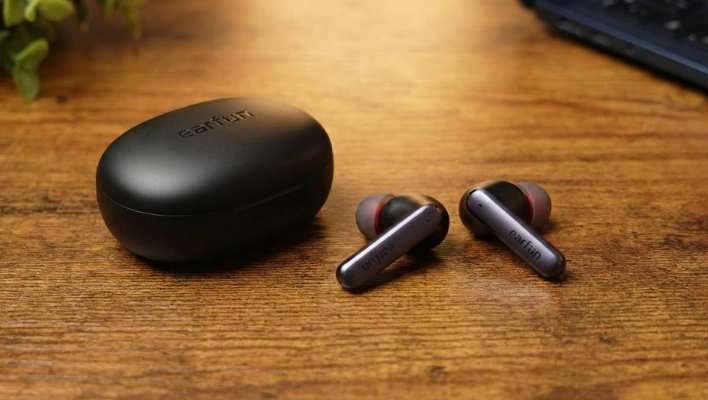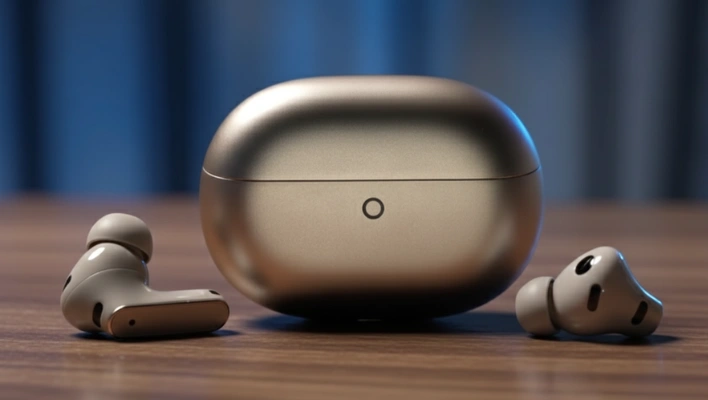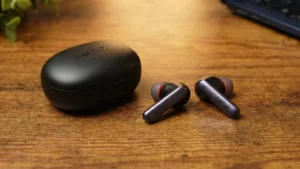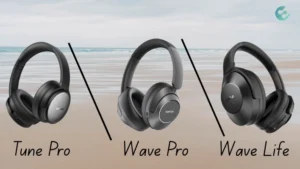I already compared Redmi Buds 5 vs QCY HT10, and today I compared the Pro model, meaning it’s Redmi Buds 5 Pro vs QCY HT10 to see which one is better for your needs.
In this article, we’ll dive into the key features, performance, and value proposition of these two popular wireless earbuds. Whether you’re looking for superior sound quality, effective noise cancellation, or long battery life, I’ll help you make an informed decision.
Let’s explore how the upgraded Redmi Buds 5 Pro stacks up against the QCY HT10 in various aspects that matter most to users.
Before diving into the review, here are the quick specs differences between the Redmi Buds 5 Pro vs QCY HT10:
| Feature | Redmi Buds 5 Pro | QCY HT10 |
|---|---|---|
| Bluetooth Version | 5.3 | 5.3 |
| Battery Life | Up to 10 hours (ANC off) | Up to 5 hours (ANC off) |
| Active Noise Cancellation | 52dB | 46dB |
| Ear Tips | Silicone tips included | Tip-less design |
| Companion App | Xiaomi Earbuds app | QCY app |
| Wear Detection | Yes | Not mentioned |
| Sound Customization | Yes, via app | Not mentioned |
| Approximate Price | ~$60 USD | ~$40 |
| Best Deal | Check on AliExpress | Check on AliExpress |
Redmi Buds 5 Pro vs QCY HT10: Detailed Review
Design and Build Quality
Both the Redmi Buds 5 Pro and QCY HT10 feature attractive designs, but there are some notable differences. The Redmi Buds 5 Pro boasts a high-quality case and earbuds, exuding a premium feel overall.
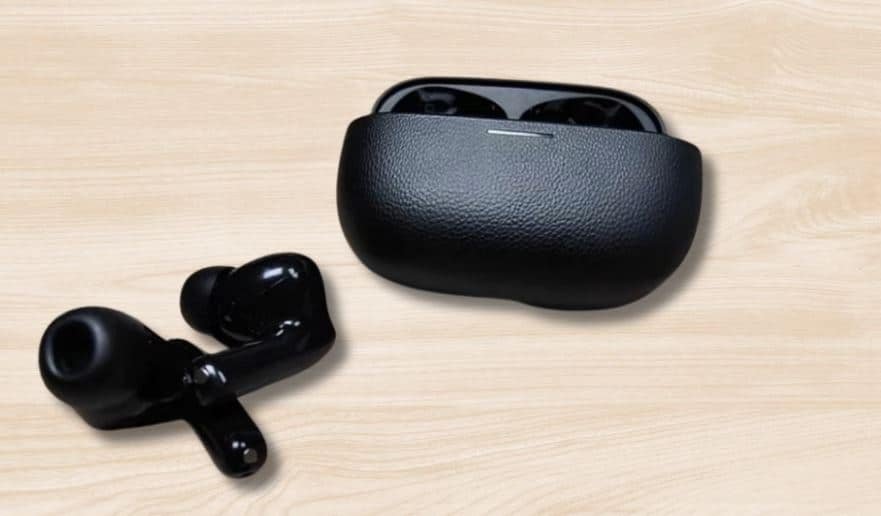
While the QCY HT10 also has a nice design, it may not feel quite as premium as the Redmi model. One key difference is that the Redmi Buds 5 Pro includes silicone ear tips, while the QCY HT10 has a tip-less design.
Both earbuds fit securely in the ear, but some users may find the Redmi Buds 5 Pro slightly more comfortable due to the customizable fit from the ear tips.
Comfort and Fit
How earbuds feel in your ears can make or break your experience. Both models are reported to be comfortable for most users. The Redmi Buds 5 Pro may have a slight edge in comfort due to the customizable ear tips.
However, the QCY HT10’s tip-less design might be preferred by those who don’t like the feeling of in-ear buds.
Connectivity
In terms of wireless connectivity, both models feature Bluetooth 5.3, which is a modern and reliable standard. Users report good Bluetooth performance from both earbuds, with stable connections.
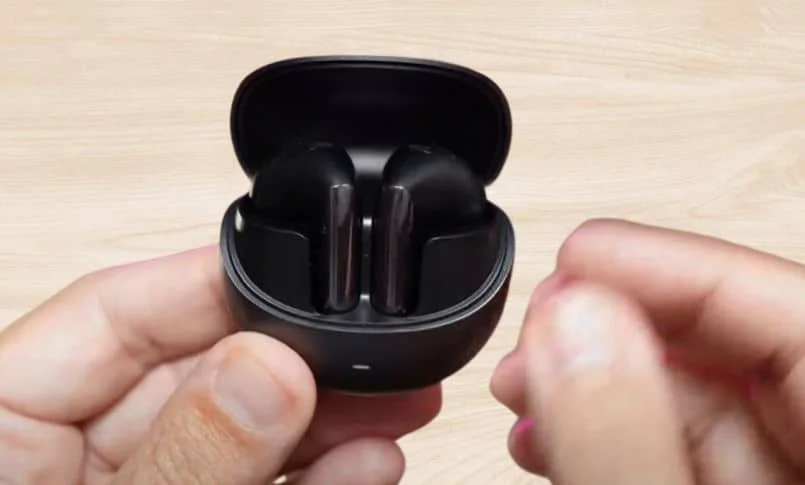
The Redmi Buds 5 Pro is compatible with the Xiaomi Earbuds app, while the QCY HT10 works with the QCY app for additional features and controls.
Active Noise Cancellation (ANC)
For those who value a quiet listening experience, both models offer active noise cancellation.
The Redmi Buds 5 Pro provides impressive ANC performance, with up to 52dB of noise reduction. The QCY HT10 isn’t far behind, offering 46dB of noise cancellation.
In testing, the Redmi Buds 5 Pro’s ANC was found to be notably effective, among the best in its class.
Sound Quality
Perhaps the most crucial aspect of any earbuds is how they sound. Both models offer good sound quality, but there are differences.
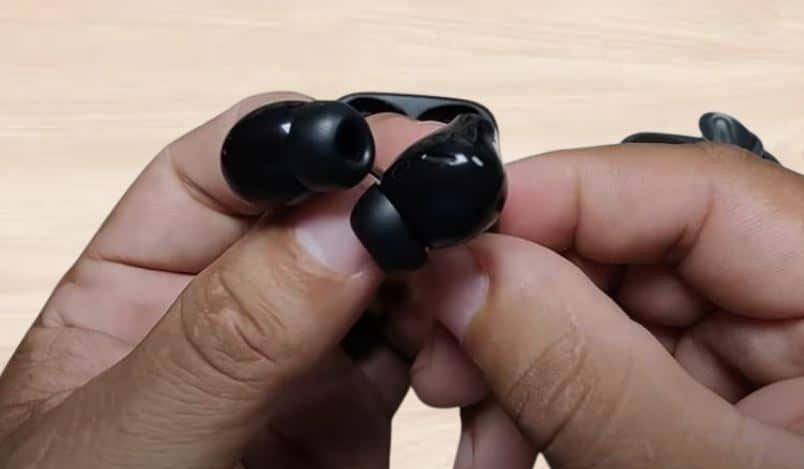
The Redmi Buds 5 Pro is praised for its superior sound, with well-balanced audio that maintains quality even at high volumes. It also allows users to customize sound effects through its companion app.
The QCY HT10 is considered to have good sound for its price range and design, particularly for a tip-less model.
Microphone Quality
For those who plan to use their earbuds for calls, both models include built-in microphones. Based on my testing, both perform decently, though specific performance may vary depending on environmental conditions.
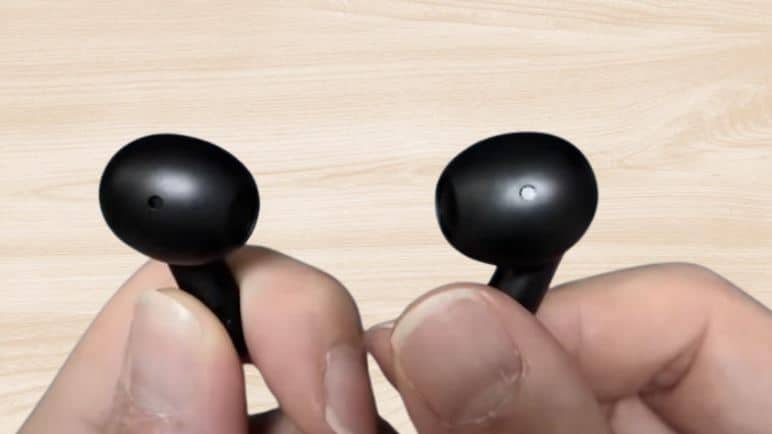
The Redmi Buds 5 Pro seemed to have a slightly clearer audio pickup, but the QCY HT10 also provided satisfactory call quality in most situations. It’s worth noting that neither model excels in extremely noisy environments, which is typical for earbud microphones.
For casual use and everyday calls, both should serve you well, but if call quality is a top priority, you may want to consider dedicated headsets with boom microphones.
Gaming Performance
If you’re a mobile gamer, low latency is important. I tested both earbuds for audio delay in games.
The Redmi Buds 5 Pro showed slightly lower latency, but both models offered reasonable performance for casual gaming.
In most mobile games, the delay was barely noticeable, allowing for an enjoyable experience. However, for competitive gaming where every millisecond counts, neither model quite matches the performance of dedicated gaming headsets.
If you’re a casual mobile gamer, either earbud should suffice, but serious competitive gamers might want to consider a specialized gaming headset for the lowest possible latency.
Battery Life
Battery life is an important factor for many users, and here we see a significant difference between the two models.
The QCY HT10 offers about 5 hours of continuous playback with active noise cancellation (ANC) turned off. In contrast, the Redmi Buds 5 Pro boasts an impressive 10 hours of playback with ANC off.
The Redmi model also includes a wear detection sensor, which pauses music when you remove an earbud, helping to conserve battery life. Overall, the Redmi Buds 5 Pro has a clear advantage in battery performance.
Price
As of the time of writing, the Redmi Buds 5 Pro costs around $60 USD. On the other hand, the QCY HT10 is priced at approximately $40 USD.
These prices may vary depending on your location, current promotions, and the retailer you choose.
Best Deal:
Redmi Buds 5 Pro: View on AliExpress
QCY HT10: View on AliExpress
Redmi Buds 5 Pro vs QCY HT10: Which Should You Choose?
After comparing these two models, the Redmi Buds 5 Pro stands out as the superior option overall. It offers better sound quality, more effective ANC, longer battery life, and a more premium feel. If you’re willing to spend a bit more, it’s likely to provide a better experience.
However, the QCY HT10 is a solid choice for those on a tighter budget or who prefer a tip-less design. It still offers good performance for its price point and may be more comfortable for some users.
Related: Xiaomi Redmi Buds 5 Pro vs QCY HT05
Nick, the Co-founder of Earbuds Arena, is a seasoned freelance tech journalist with over ten years of experience covering wearables, apps, headphones, and gadgets. When he’s not immersed in the tech world, you’ll likely find him unwinding with video games, going for a run, or enjoying a game of soccer on the field.
